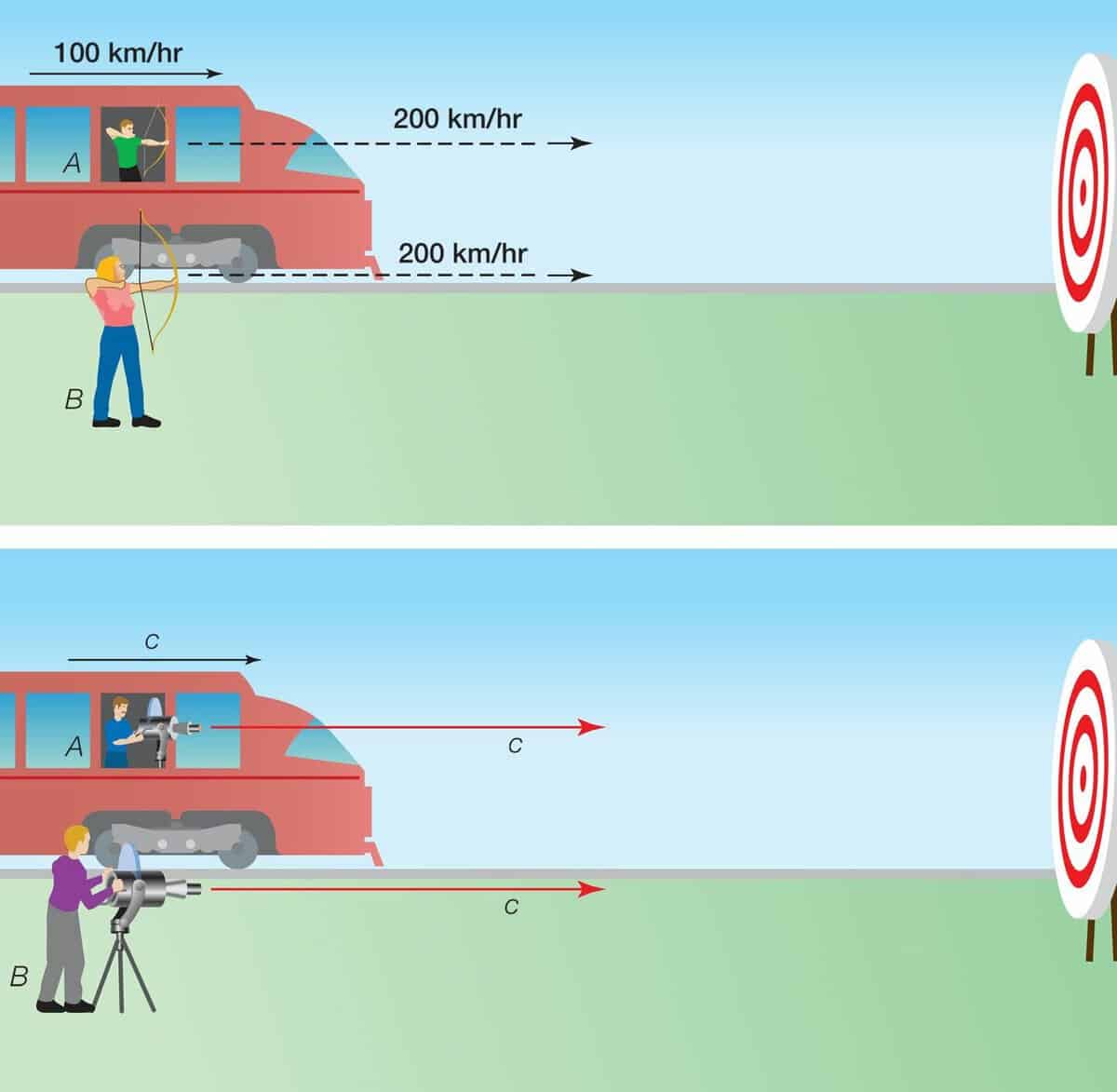The concept of relativity principle, which revolutionized the commonly accepted beliefs about the universe at the beginning of the 20th century, continues to captivate the thoughts and emotions of people to this day. Today, let’s explore together what it entails.
In 1905, Albert Einstein introduced the special theory of relativity (STO), which provided an explanation for how to interpret the movements between different inertial reference systems – in simpler terms, objects that are in constant motion relative to each other.
Einstein postulated that when two objects are moving at a constant velocity, it is more appropriate to consider their motion in relation to each other rather than assuming one of them as the absolute reference frame.
Therefore, if you and another astronaut named Herman are both flying in separate spaceships and want to compare your observations, all you need to know is the speed at which you are moving in relation to each other.
The theory of relativity specifically focuses on one particular scenario (hence its name) where motion is linear and constant. However, if a physical object accelerates or changes direction, the principles of the theory of relativity no longer apply. In these cases, the general theory of relativity (GTR) takes over and explains the motion of physical objects in more complex situations.
Einstein’s theory is based on two fundamental principles:
1. The principle of relativity: the laws of physics remain the same for objects that are inertial reference frames, meaning they are moving at a constant speed relative to each other.
One factor that contributed to Albert Einstein’s success was his prioritization of experimental data over theoretical data. In instances where several experiments yielded results that contradicted established theories, numerous physicists dismissed the experimental findings as erroneous.
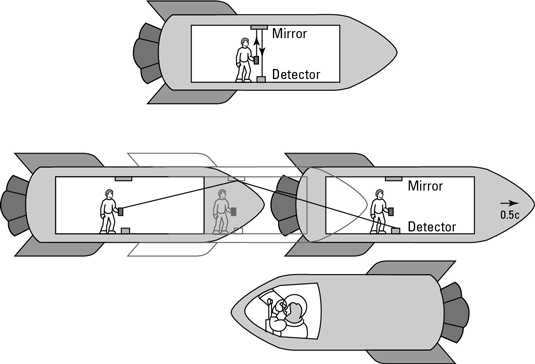
Imagine that your spacecraft is moving at a steady pace, which is half the speed of light (0.5c). According to Einstein’s theory of relativity, you wouldn’t notice any difference; your motion would be imperceptible to you.
However, if Herman were observing you from a stationary spaceship, he would perceive a completely different scenario. From his perspective, the beam of light would travel diagonally towards the ceiling mirror, reflect off of it, and then fall diagonally onto the detector.
In essence, the path of the light beam would appear distinct to both you and Herman, resulting in a difference in its length. Consequently, the amount of time it takes for the laser beam to travel the distance to the mirror and the detector would seem dissimilar to you.
The phenomenon known as time dilation occurs when a starship is moving at high speed, causing time to pass much slower for an observer on Earth.
Ever considered the idea that the universe is similar to a cello? Well, it hasn’t crossed your mind, and that’s because the universe is not like a cello. However, it does have strings.
This particular example, along with several others, clearly illustrates the inseparable link between space and time. This connection becomes apparent to observers only when dealing with speeds close to that of light.
Experiments conducted since Einstein’s groundbreaking theory was published have provided confirmation that space and time are indeed perceived differently depending on the velocity of objects.
Uniting mass and energy
In 1905, Einstein published a well-known paper where he united mass and energy through a straightforward equation that has become common knowledge among students: E=mc^2.
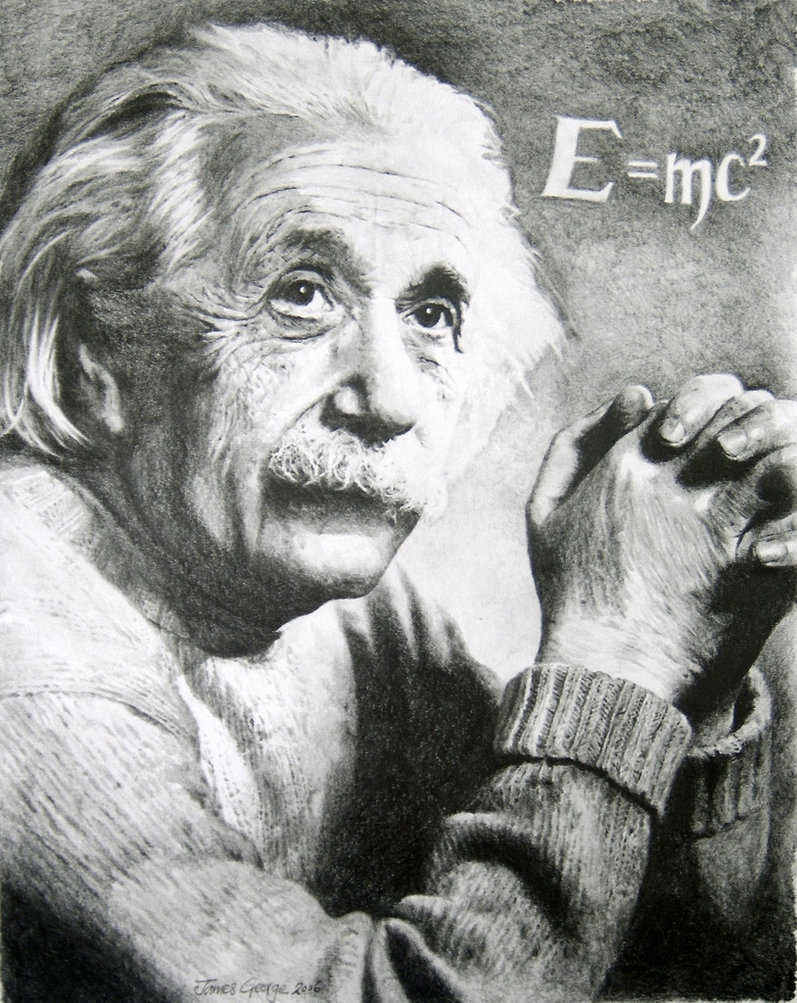
The concept put forth by the renowned physicist states that as the velocity of a physical object increases, approaching the speed of light, its mass also increases. In other words, the faster an object moves, the heavier it becomes. When the speed of light is attained, the mass of the object, along with its energy, becomes infinite. Consequently, the heavier an object is, the more difficult it is to accelerate it further; achieving an infinite mass requires an infinite amount of energy. Hence, it is deemed impossible for material entities to attain the speed of light.
As you may be aware, the recent days witnessed the breaking of the world record for the fastest Rubik’s cube solving. At the Jawa Timur Open 2016 in Indonesia, Mats Valk, a speedcuber from the Netherlands, achieved a remarkable feat.
Due to the inherent correlation between these two concepts, it is possible to convert matter into energy and vice versa – energy into matter.
Regarding the subject
It’s all about physics! How well acquainted are you with it? Take the Naked Science quiz
An adolescent, who is 18 years old, created a brief STO video and earned $400,000 from Mark Zuckerberg.
Russian scientist presents groundbreaking proposal on a novel state of matter
Trending
Researchers trace the origins of the famous ‘ice man’ Etzi
A recent investigation has revealed that the ancient individual, whose body was remarkably preserved in the Alpine ice for countless millennia, possessed a hairless head and a dark complexion.
Ancient rulers of the Bronze Age engaged in city trading
Archaeologists from Turkey have made a remarkable discovery – an extraordinary tablet bearing an Akkadian inscription, shedding light on an extraordinary economic circumstance that occurred around four thousand years ago.
Scientists have discovered a possible method for transmitting sound in space
A team of physicists from Finland has successfully demonstrated the practicality of the phenomenon known as “vacuum phonon tunneling”. In specific situations, sound waves are capable of “leaping” from one object to another, even across a vacuum.
Researchers Discover an Ancient Creature Known as the “Ice Mouse” from the Time of Dinosaurs
A fascinating new study reveals the existence of a minuscule organism that inhabited the Earth approximately 73 million years ago in the frigid region of northern Alaska. This remarkable creature possessed the ability to thrive in freezing temperatures without the need for hibernation. Similar in appearance to a shrew, this extraordinary animal weighed less than an empty aluminum soda can.
An international group of researchers has discovered proof that Vlad Tepes, famously known as Count Dracula, experienced a rare ailment that resulted in his tears mixing with blood.
Ancient kings from the Bronze Age exchanged cities
Archaeologists from Turkey have come across a one-of-a-kind tablet containing an inscription in Akkadian that recounted an extraordinary economic circumstance nearly four thousand years ago.
The Indians have initiated the delivery of weaponry to an undisclosed buyer. Upon investigation, it was discovered that the recipient of the arms is Armenia.
This marks the first instance of such a substantial export of military equipment from India. Thus far, advanced Indian military technology has not been in high demand internationally.
Scientists have debunked the theory of the “ten thousand step rule.”
It is commonly believed that walking at least ten thousand steps per day is crucial for maintaining good health. However, a recent comprehensive study has demonstrated that the benefits of walking are not solely derived from long distances, and that merely four thousand steps can suffice in lowering the risk of mortality.
Paleontologists have described what could potentially be the largest creature in history
Ancient remains discovered in South America are believed to belong to a prehistoric sea mammal, estimated to weigh up to 340 tons – surpassing the current record-holder, the blue whale, by one and a half times.
Opinions
Another law comes into play here – You can’t! – Not in terms of physics and mathematics, but rather in terms of the scientists themselves!!! They are stuck viewing Einstein’s Theory of Relativity as absolute truth! Just like how the atom was once thought to be indivisible. It’s like a kindergarten, not a group of scientists. They build a barrier and simply observe. Everyone is content, and the funding is put to good use. Have you ever tried jumping? Look beyond it. When I was a child, I used to bounce on a trampoline and there was so much fascinating things to see! Let’s create a trampoline.
Begin by familiarizing yourself with the origins and principles of the hundred first theory before attempting to write articles for novices. It is important to understand that a laser is not a scattered beam of light, but rather a directed one. As a result, it is impossible for a laser to hit a specific point on a moving ship. However, it can be utilized to determine whether an object is in motion or stationary. It is worth noting that Einstein did not have access to lasers during his time and therefore could not have predicted these advancements. Furthermore, lasers are not suitable for demonstrating transverse effects.

Traveling to the hypothetical star Z at a velocity of C would take a total of 4 years, consisting of 4 years to reach the star and an additional 4 years to return to Earth. This journey represents a complete round trip. However, if the velocity were reduced, for instance, to 0.5 C, the total travel time would increase to 16 years. In this scenario, the star Z would be unreachable for a period of 8 years. It seems illogical that such a significant time discrepancy would occur on Earth.
The aforementioned article explains that the special theory of relativity only accounts for a particular case, specifically when motion occurs in a straight and uniform manner. If an object experiences acceleration or changes direction, the laws of general relativity no longer hold true. Hence, the special theory of relativity cannot be applied to the back and forth motion described in this context.
This phenomenon is known as time dilation, which occurs when objects move at speeds close to the speed of light. At such high speeds, all processes, including quantum and biochemical processes, slow down, resulting in a deceleration of the aging process. This effect is also present in everyday objects, but to a much smaller degree. However, the faster an object moves, the more pronounced the slowing down of processes and the aging process becomes.
I have previously expressed my views on A. Einstein, who is often regarded as a genius in academic science. However, I believe that the problem lies not with Einstein, but with the flawed practices of academic science as a whole. Newton and Galileo’s mechanics are consistent, but the academic science community tends to overlook this fact. Einstein is merely used as a scapegoat to mask the shortcomings of Newtonian physics.
Indeed. And if the speed of light remains constant, what happens when two objects are in motion relative to each other at the speed of light? How does this reconcile with the theory?
It is possible for two objects to move at any speed relative to each other, similar to how two photons traveling in opposite directions have a combined speed of 2C.

Has anyone ever witnessed a physical object moving at the speed of light? It is likely that they merely perceived it as light and were unaware of its material nature. Such a notion is preposterous!
When considering the matter, one can observe that natural motion does not follow a straight and consistent path. Instead, any observer is in constant rotation along with the Earth’s surface. Moreover, the Earth itself revolves around the sun, and the sun orbits the center of the galaxy. Meanwhile, galaxies scatter and accelerate away from the hypothetical center of the Big Bang. By combining the planetary rotations with the sun’s rotation within the galaxy, a spiral pattern emerges. This suggests that rotational motion is the prevailing type of movement in nature. Instead of postulating a hypothetical force (such as dark energy) to account for the dispersal of galaxies, why not consider the possibility that it is the centripetal acceleration of the visible portion of the universe that surpasses the gravitational force?
Classical mechanics holds significant significance in the advancement of science and the natural sciences. It has served as the foundation for numerous scientific disciplines and has played a crucial role in driving technological progress. Additionally, mechanics has had a profound impact on the development of philosophy and the cultivation of a proper worldview. Furthermore, within the realm of worldview, this branch of physics continues to serve as an essential bridge for human cognition, facilitating the comprehension of phenomena both on Earth and beyond.
The cornerstone of classical mechanics is Newton’s fundamental theory, which describes the nature of the physical world through the definitions of time, space, point, and force as intricate interactions between material objects. In this framework, all physical phenomena are explained as the movement of physical entities governed by Newton’s immutable laws.
The law of light propagation and the principle of relativity in classical mechanics are in harmony, thus forming the foundation of the special theory of relativity.
When scientists provide a detailed description of physical processes, they always make use of a reference frame. For instance, the motion of material particles is typically analyzed in relation to the Earth, with the assumption that the Earth is at rest. Consequently, Galileo’s principle of relativity demonstrated that the law of inertia holds true on our planet. According to this law, the impact of forces on an object is evident in immediate changes in velocity; forces are not necessary to maintain a constant velocity.
The idea behind space-time relativity
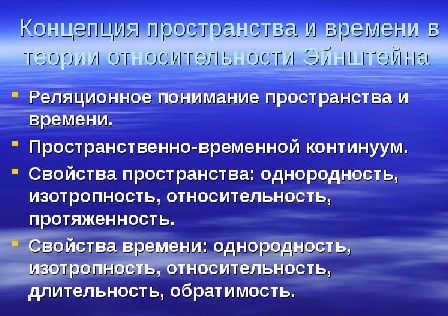
Figure 1: The idea of space-time relativity. Author24 – an online platform for exchanging student papers.
In the mechanistic worldview, the definitions of time and space have traditionally been viewed as separate from the characteristics of moving objects. Space is seen as a universal container for moving bodies, while time is treated as a mere parameter that does not account for the actual changes that occur. In essence, mechanics only focuses on reversible processes, which greatly simplifies the understanding of reality.
The drawback of this image is that in the theory of relativity, space and time are defined as separate and distinct forms of matter’s existence, leaving their interrelation uncertain. The contemporary framework of physical space-time has significantly transformed our understanding of natural science, bringing us closer to reality. Consequently, an initial introduction to classical mechanics should incorporate the current conception of space-time.
The concept of relativity in classical mechanics
The concept of relativity was initially proposed by Galileo, but it was not until Newton’s development of mechanics that this principle was fully established. To comprehend this concept, it is necessary to introduce the notion of a reference frame or coordinates. In physics, the position of a moving object at any given time is determined solely in relation to another physical object, which is referred to as a reference frame.
The physical body is directly connected to the corresponding coordinate system, such as the well-known Cartesian system. On a specific plane, the movement of a physical point is described by the following fundamental coordinates:
- x coordinate – indicating the exact distance of the point from the origin on the horizontal axis;
- indicator z – is added in space to the two previous indicators.
Researchers highlight inertial systems among the various reference frames, which are either in uniform motion or at rest relative to each other. The principle of relativity is always applied to these concepts, playing a significant role. The principle of relativity states that all mechanical phenomena occur in the same manner in inertial systems. Under such circumstances, the patterns of motion of material objects are expressed mathematically and are covariant.
The significance of the theory of relativity in the realm of science
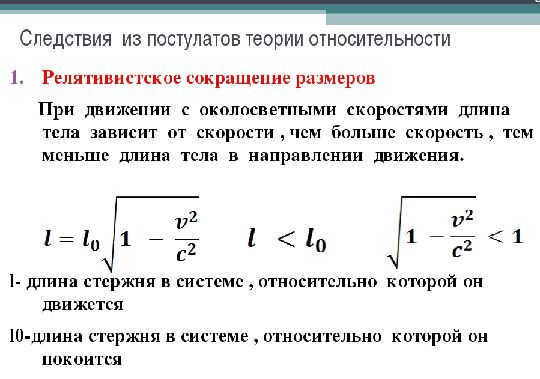
Figure 2: Implications derived from the postulates of the theory of relativity. Author24 – Online Student Paper Exchange
The theory of relativity is a conceptual framework that comprehensively explains the characteristics of physical phenomena in space and time.
When the field of natural science and science in general started leaning towards interpreting all natural processes based on the laws of mechanics, the principle of relativity became the dominant and unquestionable principle. However, this situation drastically changed when scientists began closely examining electrical, magnetic, and optical phenomena. As a result, Maxwell was able to unify all these processes under a single electromagnetic hypothesis. The emergence of this theory exposed the limitations of classical mechanics in accurately describing natural phenomena, leading researchers to question whether the principle of relativity can be applied to electromagnetic systems.
Albert Einstein, the creator of the theory of relativity, presents two main arguments in support of the comprehensiveness of this principle:
- The accuracy with which this method is carried out in mechanics makes it valid in electrodynamics as well;
- If the inertial reference frames are not equal for a detailed explanation of natural phenomena, it becomes simplest to describe all laws using a single concept.
This implies that in any frame of reference associated with a moving object, mechanical phenomena are described in a more intricate manner compared to a concept linked to the overall position of these elements.
An even more illustrative example can be seen in the motion of a planet around the Sun, traveling at a velocity of approximately 30 kilometers per second. If the theory of relativity did not hold true in this scenario, the laws governing the movement of physical objects would be influenced by the Earth’s spatial orientation. However, no such discrepancy has been observed in the physical inequality of other directions. This is where the conflict between the principle of relativity and the well-established method of determining the constancy and speed of light in a vacuum arises.
Scientists faced a dilemma: whether to abandon the hypothesis that the speed of light is constant, or the principle of relativity. The first option has been established so definitively and precisely that rejecting it would be unwarranted. Denying the validity of the theory of relativity in the realm of permanent electromagnetic processes presents equally challenging difficulties.
This contradiction between the principle of relativity and the law of constancy arises from the fact that classical mechanics was based on two unproven ideas:
- the time-space interval between two specific events is unaffected by the motion of a material body;
- the spatial distance between two points in solid matter is not influenced by the frame of reference.
Albert Einstein proposed two theories of relativity:
- The Special Theory of Relativity (STO, 1905): This theory states that the laws of physics are the same for all observers who are not accelerating, and that the speed of light in a vacuum is constant regardless of the observer’s motion.
- The General Theory of Relativity (GTR, 1915): According to this theory, massive objects cause the distortion of spacetime, which is responsible for the force of gravity. The GTR also incorporates the concept of acceleration and is more mathematically complex than the STO.
Einstein’s Revolutionary Theory: Special Theory of Relativity
The Special Theory of Relativity (STO) is a groundbreaking idea that revolutionized our understanding of the universe. It is based on the principle that the speed of light is constant for all observers, regardless of their motion or position.
In 1905, Albert Einstein conducted a series of experiments that led him to this remarkable conclusion. He discovered that the speed of light remains the same even when the Earth orbits around the Sun. This revelation challenged the prevailing notion of absolute space and time.
At its core, the STO explains the intricate relationship between space and time for objects moving at a constant speed in a straight line. It proposes that as an object’s velocity approaches the speed of light, its mass becomes infinite. This phenomenon, known as relativistic mass increase, sets a cosmic speed limit that cannot be surpassed.
This concept of a speed limit has captivated the minds of both scientists and science fiction enthusiasts alike. The dream of traveling vast distances in the blink of an eye has fueled countless discussions and inspired countless works of fiction.
Einstein’s theory not only revolutionized our understanding of the physical world but also introduced a new foundation for all of physics. It brought forth new concepts of space and time that continue to shape our exploration of the cosmos.
An illustration of the Special Theory of Relativity (STO): imagine yourself on a train moving at a speed of 100 km/h and tossing a tennis ball to your friend, who is also on the train, with a speed of 10 km/h. Now, the question arises: at what speed did the ball actually travel?
It’s impossible to provide a definite answer to this query as it depends on the perspective of the observer.
From your viewpoint and from the perspective of the individuals within the train, the tennis ball covered a distance of 10 kilometers per hour. However, to those outside the train, the ball appeared to be moving at a speed of 110 km/h (100 + 10).
The Equation of the Special Theory of Relativity (E = mc²)
In the theory of special relativity, Albert Einstein introduced the most renowned formula ever formulated: E = mc²

For instance, in theory, according to this equation, the amount of energy generated from completely converting one kilogram of mass equals 9 x 10^16 joules (which is 1kg × (300,000,000,000 m/s)²).
This equation establishes the quantitative equality (equivalence) between the conversion of matter into energy and vice versa.
The relationship between mass and energy is interconnected and exchanged in this equation.
The time duration of a fixed system (observer) is always shorter than the system that is in motion.
The time duration between two events depends on the reference frame, so they (time durations) can be different, i.e. the time duration is relative.
Imagine that you are observing some phenomenon occurring in space. If you’re observing and measuring time:
- while you’re on a moving object (for example, you’re on a moving spaceship), it would be the same data,
- but if you’re on a stationary object (for example, your spaceship is not moving), you will see completely different data – the time to complete this action will be much shorter.
This phenomenon is also known as relativistic time dilation.
Einstein’s General Theory of Relativity
Following his Special Theory of Relativity (STO), Einstein dedicated another decade to developing the General Theory of Relativity (GR), which accounts for acceleration. In this groundbreaking work, he established that massive objects cause a distortion in the fabric of space-time, resulting in the phenomenon we perceive as gravity.
The General Theory of Relativity introduced the concept of a four-dimensional world, known as the space-time continuum, which encompasses three spatial dimensions (length, width, and height) along with time. Unlike the Special Theory of Relativity, which only applies to objects moving at a constant speed relative to each other, the General Theory of Relativity applies to all frames of reference. In essence, the General Theory of Relativity encompasses and expands upon the principles outlined in the Special Theory of Relativity.
An illustration of General Relativity: imagine you find yourself in a descending elevator, where you experience weightlessness due to the free fall. In a similar scenario, suppose you are aboard a rocket, floating in zero gravity, far away from any gravitational sources. If the rocket begins to move, you will fall in the opposite direction of its motion (for instance, if it ascends, you will fall downwards).
General Relativity establishes a correlation between accelerated motion and the pull of gravity; in other words, it asserts that acceleration is akin to a gravitational field.
How is the general theory of relativity different from the special theory of relativity?
- The special theory of relativity (STO) was formulated in 1905. It states that the laws of nature are the same for all reference frames that are moving at a constant speed. This theory focuses on the physical processes of objects that are moving uniformly.
- The general theory of relativity (GRT) was formulated in 1915. It builds upon the principles of special relativity but extends them to include reference frames that are accelerating. This theory studies the behavior of accelerating objects and provides an explanation for the phenomenon of gravity.
A frame of reference consists of a reference frame, a coordinate system, and a time frame. It is used to analyze the motion or equilibrium of other objects or points relative to a specific body.
The movement of objects and substances must occur within the confines of time and space.
Galileo’s concept of relativity
This concept asserts that all mechanical phenomena occur in the same manner within all frames of reference. It was formulated by the esteemed Italian scientist Galileo in 1636.
The spatial position of every object must always be considered in relation to other objects, taking into account the principle of relativity.
Therefore, an object can be at rest relative to one entity while simultaneously being in motion relative to another. For instance, when sitting in an airplane, a passenger is both stationary (in relation to the airplane) and moving in sync with the aircraft’s motion (in relation to the ground).
Therefore, because of the relative nature of motion, issues in classical mechanics can only be resolved within a specific selected point of view.
Classical mechanics according to Newton
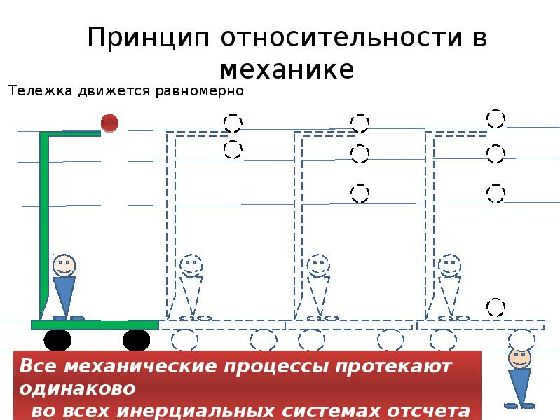
Figure 1: The principle of relativity in mechanics. Author24 – online exchange of student papers
Newton’s classical mechanics laid the foundation for the development of the principle of relativity. Classical mechanics is based on Newton’s fundamental concept, which states that the physical reality can be described using the concepts of “time,” “space,” “material point,” and “the force of interaction between material points.”
The perception of all physical events in this concept is based on the observation of the movement of material points governed by the unchanging laws established by Newton. These laws are considered to form a cohesive system:
- The Law of Inertia. As per Newton’s first law, every material point possesses the ability to maintain its state of rest or constant straight-line motion until external forces act upon it.
- The second law is at the core of classical mechanics. It is derived from a quantitative approach, which involves the introduction of key concepts like mass, force, and acceleration. In this context, mass refers to the measure of inertia (inert mass), while force represents a physical vector quantity that measures the influence of other bodies on the object. The law states that the acceleration of a material point (or body) is directly proportional to the force causing it and inversely proportional to the mass of the object.
- Law of action and reaction. The third law is characterized by the interaction between objects. Its formulation states that there is a force exerted by the second object on the first object, and vice versa. This force is equal in magnitude and opposite in direction.
The law of universal gravitation is an additional principle in mechanics. It states that two objects with certain masses can attract each other with a force that is directly proportional to the product of their masses and inversely proportional to the square of the distance between them.
Mass is used as a measurement of the interaction between gravitating material particles (referred to as “gravitational (heavy) mass”). Physicists have determined that heavy mass and inert mass are equal.
The mechanical interaction of objects occurs due to the influence of gravitational force. In classical mechanics, the concept of “force” is considered fundamental, as it indicates the level of interaction between objects and the cause of their mutual motion.
According to the law of universal gravitation, the mass of objects is the source of force. This explains the fundamental nature of mass in relation to force.
Transformations by Galileo
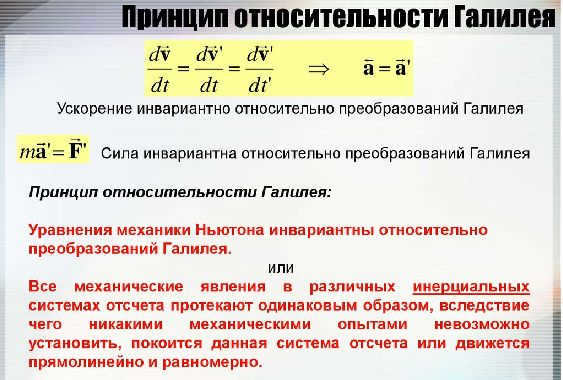
Figure 2. Galileo’s principle of relativity. Author24 – Online Student Paper Exchange
In terms of relativity, it is meaningful to examine Galileo’s transformations as they pertain to the fundamental aspects of classical mechanics.
Galileo’s transformations determine the shift from one inertial reference frame to another, which is moving uniformly and linearly relative to the first. The reference frame itself is understood in a four-dimensional format, encompassing the time reference along with three spatial coordinates.
The fundamental principles of classical physics remain unchanged when subjected to Galilean transformations, except for one notable exception: the phenomenon of electromagnetism. It is this exception that prompted Lorentz to develop a more generalized set of transformations, which ultimately laid the groundwork for the special theory of relativity.
The Concept of Relativity in Classical Mechanics
The fundamental idea in classical mechanics was the concept of relativity, first formulated by Galileo. This concept asserts that mechanical motion should be considered relative to the chosen reference frame, as its nature depends on this frame.
Thus, Galileo’s principle of relativity in mechanics can be stated as follows: the laws of dynamics have the same form in all inertial frames of reference.
In simpler terms, this principle implies that the equations of classical dynamics remain unchanged under coordinate transformations. This invariance, in turn, guarantees that physical quantities remain constant and unchanged when transitioning between different reference frames.
Over time, physicists have discovered that the principle of relativity is not limited to classical mechanics alone. Thanks to the French mathematician and physicist A. Poincaré, the principle of relativity has been expanded to encompass all electromagnetic phenomena. Poincaré was able to extend the principle of relativity to include all electromagnetic phenomena.
Later, this principle, along with the postulate that the speed of light in a vacuum is independent of the motion of its source, formed the foundation of A. Einstein’s special theory of relativity.
Today, modern physics recognizes the principle of relativity as a fundamental physical law, asserting the independence of physical processes of any nature from the rectilinear and uniform motion of the reference frame.
- The fundamental physical principle known as the principle of relativity, which was developed by Albert Einstein, states that all physical processes in inertial reference systems occur in the same manner, regardless of whether the system is at rest or in uniform and straight-line motion. This principle is one of symmetry and is considered to be of great importance.
Consequently, it can be deduced that the laws of nature remain unchanged in all inertial reference systems. A specific example of the principle of relativity, known as Galileo’s principle of relativity, shares the same idea but applies solely to the laws of classical mechanics. Galileo’s principle assumes the validity of Galileo’s transformations and does not address the question of whether the principle of relativity can be applied to optics and electrodynamics.
The Special Theory of Relativity (STO), also known as the partial theory of relativity, is a scientific theory that explains the motion, mechanics, and space-time relationships at speeds below the speed of light in a vacuum. It also includes speeds close to the speed of light. Within the Special Theory of Relativity framework, Newton’s classical mechanics can be seen as an approximation for low speeds. STO primarily focuses on the geometry of four-dimensional space-time and is based on the concept of a flat space-time.
Classical mechanics, also referred to as Newtonian mechanics, is a branch of physics that studies the laws governing the motion and positions of objects in space over time. It is grounded in Newton’s laws and Galileo’s principle of relativity.
Hamilton’s principle of smallest action, also known as Hamilton’s principle, is a technique for deriving the equations of motion for a physical system by seeking a stationary value of a special functional called action. This functional is often extreme, typically the smallest value, due to the convention of determining the sign of action. The principle is named after William Hamilton, who utilized it to develop the Hamiltonian formalism in classical mechanics.
Lorentz covariance refers to the characteristic of mathematical equations that describe physical laws to remain unchanged when subjected to Lorentz transformations. It is widely acknowledged that all physical laws should exhibit this property, and no experimental evidence of deviations from it has been discovered thus far. However, there are certain theories that are still unable to be formulated in a manner that satisfies Lorentz covariance.
Classical physics, which predates quantum theory and relativity, was established during the Renaissance by several prominent scientists, with Sir Isaac Newton being especially recognized as the founder of classical mechanics.
Mentions in literature
1. The concept of relativity, which expanded on Galileo’s concept of relativity to encompass all physical phenomena, was expressed as follows: all physical processes under the same conditions in inertial reference frames proceed in the same manner. Einstein’s principle of relativity stated that no experiment conducted within a specific reference frame can determine the state of motion of that reference frame – whether it is at rest or moving uniformly and in a straight line. Therefore, all reference frames are equivalent, the laws of physics within them are unchanged, and the mathematical representation of these laws remains the same.
The cornerstone of classical physics is the Galileo’s principle of relativity, which asserts that experiments carried out in a stationary system and those performed in a uniformly and linearly moving system will yield identical outcomes. This means that the laws of mechanics remain unchanged in any inertial reference frames. An inertial reference frame is a system that is unaffected by external forces and is either in uniform rectilinear motion or at rest [18, p. 220].
Birds, on the other hand, possess a visual perception similar to humans. Moreover, their way of life grants them a distinct advantage over humans when it comes to comprehending the principles of physics. Birds, with their ability to freely soar through the air, effortlessly grasp the inherent symmetries of three-dimensional space, a concept that eludes us. Additionally, they experience the fundamental laws of motion, particularly the role of inertia in their daily existence, in a virtually frictionless environment. One could argue that birds have an innate understanding of classical mechanics, Galileo’s principle of relativity, and even geometry. If any bird species were to develop advanced abstract thinking and shed their “bird brains,” they would undoubtedly have made swift progress in the realm of physics. Conversely, humans had to overcome the constraints of Aristotelian mechanics, which were burdened with friction, in order to achieve a deeper comprehension. Historically, this endeavor required significant dedication and effort!
Einstein came up with the general principle of relativity: all physical phenomena behave the same way in relation to any inertial systems.
As a result, the concepts of intensionality and substanceality create a dialectical dichotomy of “metaphysical” origins, revealing the relativity of the duality principle. At the quantum level, there is a duality/unity between waves and particles [45], while at the biological level, there is a similar duality between gene-matter and gene-field [46]. In the following discussion, we will see that despite their seemingly abstract and removed nature from humanitarian matters, these concepts have a direct connection to the culture’s morphology due to the universality of natural laws.
Additional concepts (ongoing)
When examining intricate motion (where a particular point or object relocates within one reference frame, and this reference frame subsequently shifts in relation to another reference frame), inquiries arise regarding the correlation between velocities within the two reference frames.
Preservation principles are fundamental laws of physics that state that, under specific circumstances, certain quantifiable physical properties that describe an enclosed physical system remain constant over time. These principles constitute the most universal laws within any physical theory and offer significant insight.
Relativistic mechanics is a branch of physics that examines the principles of mechanics (the laws governing the movement of objects and particles) at speeds comparable to the speed of light. At speeds significantly lower than the speed of light, it transforms into classical (Newtonian) mechanics.
A non-inertial frame of reference is a frame of reference that is experiencing acceleration or rotation relative to an inertial frame of reference. In non-inertial frames of reference, Newton’s Second Law is also not satisfied. To ensure that the equation of motion for a material point in a non-inertial frame of reference matches the form of Newton’s second law, inertial forces are introduced in addition to the “regular” forces acting in inertial systems.
The Lorentz Ether Theory (LET) originated from H. Lorentz’s “electron theory,” which marked the culmination of classical ether theories in the late 19th to early 20th century.
The principle of correspondence, within the scientific methodology, asserts that any new scientific theory must encompass the old theory and its outcomes as a specific instance. For example, the Boyle-Marriott law is a specific case of the ideal gas equation of state under constant temperature approximation; Arrhenius acids and bases are specific cases of Lewis acids and bases, and so on.
Long-range action and close-range (or short-range) action are two contrasting concepts in classical physics that were initially at odds during its formation.
Symmetry in the broad sense refers to conformity and invariance, which are observed regardless of any changes or transformations, such as position, energy, or information.
An invariant in physics is a physical quantity or ratio that remains constant throughout a given physical process. Examples of invariants include energy, momentum, and the components of momentum in closed systems.
The principle of general covariance states that equations describing physical phenomena in different coordinate systems must have the same form. These types of equations are known as general covariant equations. In Newtonian mechanics, an example of this principle can be seen in the equations of motion in non-inertial frames of reference, which incorporate the forces of inertia.
The Theory of General Relativity (GTR; German: allgemeine Relativitätstheorie) is a mathematical description of gravity that expands upon the Special Theory of Relativity (STO) proposed by Albert Einstein in 1915-1916.
Lorentzian contraction, also known as Fitzgerald contraction or relativistic contraction, refers to the phenomenon predicted by relativistic kinematics where an observer perceives objects moving relative to them as having a shorter length (in the direction of motion) compared to their actual length. The degree of compression depends on the speed of the moving object, with the apparent compression factor deviating from 1 as the speed increases.
The gravitational paradox, also known as the Neumann-Seliger paradox, is a historical cosmological problem that arises from the classical theory of gravitation. It is formulated as follows:
An equation or a system of equations that specifies the law of evolution of a mechanical or dynamic system (such as a field) in time and space is known as the equation of motion (equations of motion).
Alternative theories of gravitation are theories that serve as alternatives to the General Theory of Relativity (GTR) or significantly modify it, either quantitatively or fundamentally. Generally, any theories that do not coincide with the general theory of relativity, even in minor details, or somehow generalize it, are referred to as alternative theories of gravitation. However, there are often theories of gravitation, particularly quantum theories, that coincide with the general theory of relativity in the low-energy limit.
The theory of relativity is a physical theory that describes the universal space-time properties of physical processes.
The energy-momentum tensor (EMT) is a symmetric second-rank tensor that describes the density and flow of energy and momentum for matter fields and determines how these fields interact with the gravitational field.
Supergravity, derived from the combination of the words “super” and “gravity,” is a generalization of the General Theory of Relativity (GTR) that incorporates supersymmetry. It can also refer to multidimensional supergravity, which includes extra dimensions, supersymmetry, and gravity.
In physics, quantization refers to the process of constructing a quantum version of a non-quantum (classical) theory or physical model in accordance with the principles of quantum physics.
The uncertainty principle, formulated by Heisenberg in the field of quantum mechanics, is a crucial concept that sets the boundary for the simultaneous measurement accuracy of a pair of quantum observables that define a system described by noncommutative operators (such as position and momentum, current and voltage, electric and magnetic fields). In simpler terms, it can be stated that the more precise the measurement of one characteristic of a particle, the less precise the measurement of the second characteristic can be.
The Schwarzschild metric is the only exact solution of the Einstein equations that describes the gravitational field around a non-rotating and uncharged black hole or a massive spherically symmetric body in empty space. This metric was first discovered by Karl Schwarzschild in 1916 and is named in his honor.
Quantum gravity is a field of study in theoretical physics that aims to provide a quantum description of the gravitational interaction. Its ultimate goal is to unify gravity with the other fundamental interactions in what is known as the “theory of everything.”
The Copenhagen Interpretation was developed by Niels Bohr and Werner Heisenberg during their collaboration in Copenhagen in 1927. They built upon M. Born’s probabilistic interpretation of the wave function and sought to address various inquiries stemming from the fundamental duality of quantum mechanics, specifically the issue of measurement.
According to the theory of intermittent light speed (ILS), it is proposed that the velocity of light in a vacuum, commonly represented as c, may not always be constant. In many instances within the field of condensed matter physics, the transmission of light through a medium does occur at a decreased rate compared to its speed in a vacuum. Additionally, certain calculations in quantum field theory require the consideration that virtual photons may travel over short distances with velocities distinct from the typical speed of light.
Ballistic theory, also known as the emissive theory, is a theory that has been rejected in the field of physics. It is an alternative to Maxwellian electrodynamics, relativity theory, and quantum theory. The proponents of ballistic theory claim that it provides a new and comprehensive understanding of the world, based on classical and mechanical concepts. However, this theory rejects the postulate of Special Theory of Relativity (STO) that states the constancy of the speed of light. According to ballistic theory, the velocity of light emitted by a moving source is added to the velocity of the source in a similar way to the velocity of the source itself.
The Law of Conservation of Impulse, also known as the Law of Conservation of Quantity of Motion, states that the vector sum of impulses of all bodies in a system remains constant if the vector sum of external forces acting on the system is zero.
Calibration invariance refers to the predictability of physical field theory, regardless of local calibration transformations. These transformations involve coordinate-dependent changes to the field, allowing for smooth transitions between bases in the space of internal symmetries.
The principles of mechanics serve as foundational concepts that reflect the general patterns observed in mechanical phenomena. From these principles, all equations governing the motion or equilibrium conditions of a mechanical system can be derived. Over time, mechanics has established a range of such principles, each resting on the foundation of mechanics. This diversity arises from the various properties and regularities exhibited by mechanical phenomena. These principles can be further classified into non-variational and variational principles.
In relativity theory, the interval serves as an analogue to the spatial distance between two events in space-time. This concept is a generalization of the Euclidean distance between two points. The interval possesses the property of Lorentz invariance, meaning it remains unchanged when transitioning from one inertial reference frame to another. Furthermore, it is an invariant (scalar) in both the special and general theory of relativity.
Lagrangian mechanics, introduced by Lagrange in 1788, offers a reformulation of classical mechanics. Within this framework, the trajectory of an object is determined by finding the path that minimizes the action, which is defined as the integral of the Lagrangian function over time. In classical mechanics, the Lagrangian function is defined as the difference between kinetic energy and potential energy.
The space-time continuum, also known as space-time, is a physical model that adds a time dimension to space, creating a theoretical construct. It is a continuous entity and is mathematically represented as a manifold with a Lorentzian metric.
Hamiltonian mechanics, which was proposed by William Hamilton in 1833, is one of the formulations of classical mechanics. It originated from Lagrangian mechanics, another formulation introduced by Lagrange in 1788. Hamiltonian mechanics can be described independently of Lagrangian mechanics by using symplectic manifolds and Poisson manifolds.
A physical field in the discipline of physics can be characterized as a physical entity that is mathematically described by a scalar, vector, tensor, spinor field (or a combination of such mathematical fields) and is subject to dynamic equations (referred to as field equations or field equations in this context – typically, these equations are partial differential equations). In simpler terms, a physical field is represented by a dynamic physical quantity (known as a field variable) that is defined.
Corpuscular-wave dualism (also known as quantum-wave dualism) is a property of nature that involves the ability of microscopic material objects to exhibit the characteristics of classical waves under certain conditions and the characteristics of classical particles under other conditions.
The Old Quantum Theory, also known as Old Quantum Mechanics, emerged between 1900 and 1924 as a precursor to quantum mechanics in describing atomic phenomena. This theory distinguishes itself by incorporating classical mechanics while simultaneously challenging some of its assumptions. The foundation of the old quantum theory lies in Bohr’s atomic model, which was later expanded by Arnold Sommerfeld to include the quantization of the z-component of angular momentum, erroneously referred to as spatial quantization. Quantization.
The principle of additionality, formulated by Niels Bohr in 1927, is a fundamental principle in science and quantum mechanics. It states that in order to fully describe quantum mechanical phenomena, two sets of classical concepts that are mutually exclusive must be applied. These sets of concepts provide comprehensive information about the phenomena as a whole. In the field of quantum mechanics, the principle of additionality is crucial for understanding and analyzing various phenomena.
The superposition principle, which is widely applied in various branches of physics, is considered to be one of the most fundamental laws. In its simplest form, this principle asserts that when multiple waves or fields interact, the resultant wave or field is the algebraic sum of the individual waves or fields.
In the realm of quantum field theory, the process of renormalization plays a crucial role in eliminating ultraviolet divergences in specific types of theories known as renormalizable theories. From a physical standpoint, renormalization involves modifying the initial Lagrangians of these theories in order to remove singularities and ensure that the resulting dynamics of the theory aligns with observable phenomena. In essence, renormalization is a methodical refinement of the interaction Lagrangian to prevent the occurrence of singularities.

